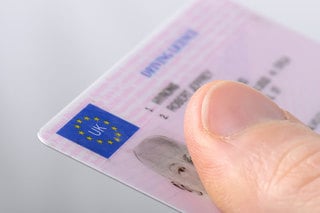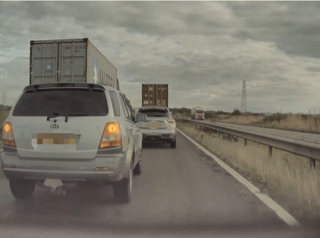Campaigners say they are “slowly winning the argument” with the Government for drivers to face more stringent eyesight tests.
However, they have played down the prospect of a change in the law this side of the next election after meeting road safety minister Stephen Hammond.
As it stands, driving test candidates must be able to read a number plate at 20.5 metres – with glasses or lenses if they need them – before the driving part of the test.
However, while up to 2,000 people fail this each year, some studies suggest that up to four million motorists do not meet the legal eyesight requirement.
There are no further compulsory checks and, even at 70 years old, drivers reapplying for a licence have only to tick a box to confirm their vision is at the required standard.
Fleet insurer RSA launched its Fit to Drive campaign in September 2011, calling for the number plate test to be scrapped and replaced with an eyesight test conducted by a qualified professional, prior to applying for a provisional licence. This would then be backed up with a mandatory eyesight test every 10 years, linked to driving licence renewal.
RSA had established a link between poor vision and driver risk after commissioning Brunel University to research the issue.
But more recently, it commissioned Deloitte to conduct a cost/benefit analysis of more frequent eyesight testing for UK drivers. That put the total cost of road accidents due to poor vision at around £33 million in 2012.
It suggested that if the law was changed it would generate almost 500,000 eyesight tests per year at a cost of £13.2m, including an £8m cost to the Government.
However, from year two onwards the savings from fewer accidents would outweigh these costs, with a maximum net benefit of £14.4m per year by year 10.
Net benefits to the Government would be realised after eight years.
The economic argument appears to have gained some traction with the Government, according to Julie Summerell, managing director of TR Fleet and chairman of the ACFO Midlands region.
She attended the meeting with Hammond, together with Jon Sellors from RSA and representatives from the Metropolitan Police.
Speaking exclusively to Fleet News, she said: “The detrimental economic effect and the cost to business struck a chord with the minister and he has committed to explore the proposals.”
It has already resulted in new draft advice being included on the Road Safety Observatory website – a Government-backed initiative recently launched by Hammond, which involves PACTS (Parliamentary Advisory Council for Transport Safety), RoadSafe and RoSPA.
Sellors said: “It’s another step forward and another indication that there’s a greater willingness to engage and debate these issues from the Department for Transport.”
He has been building a coalition of organisations that support a change in the law, which includes the road safety charity Brake and the Optical Federation.
But, following what he described as an encouraging meeting with the DVLA, he recognises that there is still a long way to go.
“I think there’s a slight reluctance by the DVLA to get rid of the number plate test because of its ease and simplicity,” explained Sellors.
It was introduced in the 1950s, but Sellors labelled it “woefully inadequate and out of date” given the huge increase in the number of vehicles on the road and the speeds they are travelling.
He added: “We’re slowly winning the argument, but the big challenge around getting the law changed is there’s a relatively short window of opportunity before the next general election.
“Realistically, it will have to remain a long-term aim, but Stephen Hammond is personally engaged in the subject now and I think there’s a lot that can be done through education and awareness in the meantime.”
The DVLA told Fleet News that all drivers are required by law to meet the appropriate eyesight standard at all times while driving.
However, a spokesman said: “We are always interested in innovative ideas on improving road safety.”
Sellors added: “We still want that legislative change to act as a safety net for those people you can’t nudge in the right direction.
“But in the meantime there is a role for businesses to play in educating their fleet drivers and making them aware of the dangers of driving with poor eyesight.”






















David Beaumont - 15/07/2013 12:44
As a vocational licence holder I have been subjected to eyesight tests annually for the past five years. There would be advantages for all driver's to take an eyesight test periodically, say every five years, but not to be conducted by a commercial organisation for the obvious reason, everyone will require spectacles!